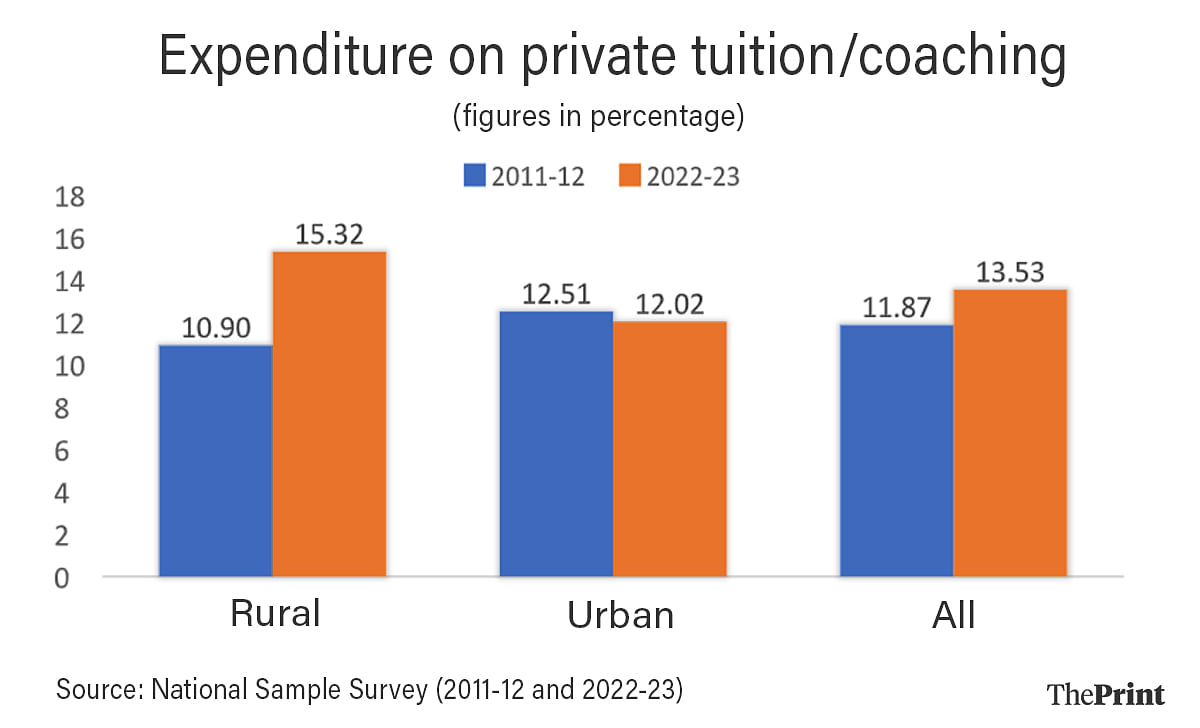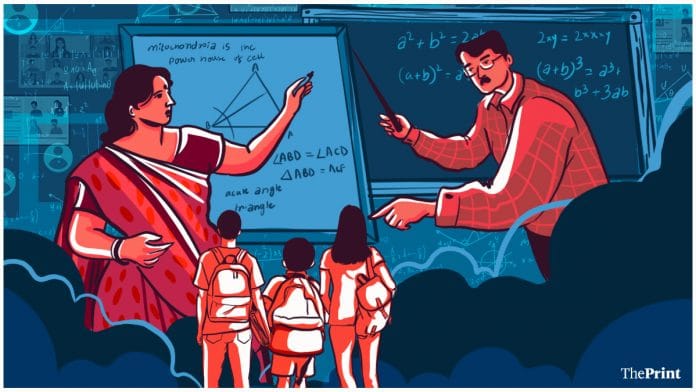Dependency on coaching to improve academic performance is now common at all levels of education. There was a time when students who sought private tuitions were considered weak in studies, even dubbed as unintelligent and dull. But things have taken a turn, and a vicious one at that. Now, the same classes are not only seen as a way to supplement students’ capacity but are also becoming prestige and lifestyle attributes, causing a rise in per capita household expenditure on the services.
There are several reasons why students seek private coaching. Academic reasons include the inability to understand instructions/discussions, poor teaching in class, or inadequate support from class systems. Personal reasons include the desire to excel or outshine others on the competition ladder. Social reasons can comprise parental desire and peer-group pressure, which at times lead to unhealthy expectations.
Thanks to these factors, coaching has become a full-fledged, continually ballooning industry, running parallel to mainstream education systems. This market is divided among four verticals: classroom coaching, study groups, one-on-one home tuition and online content-driven classes. The last one has seen an upshoot after the Covid-19 pandemic.
Increased household spending on coaching
The National Sample Survey’s Household Consumption Expenditure Survey (2011-12 and 2022-23) provides useful data on education spending by households, including spending on private coaching.
Our analysis of unit-level NSS data revealed that, in 2011-12, households spent Rs 859.2 per annum on private tuitions or coaching classes out of a total average yearly education expenditure of Rs 7,240.2. By 2022-23, it rose to an average of Rs 2,320.7 per annum out of a total average yearly education expenditure of Rs 17,147.1 per household.

Thus, households (both rural and urban) spent about 13.53 per cent of their annual education expenditure on coaching and tutoring in 2022-23. This is 1.67 percentage points higher than 2011-12 (11.87 per cent), implying an increase in household spending on coaching classes.
Also read:
Rural households are seeing huge jump in expenditure
For a better perspective, understand which type of households – rural or urban – are relatively more burdened in terms of expenditure. Let’s compare how much households, on average, have spent on private tuition/coaching out of their total spending on education.
Based on this approach, contrary to the general notion, we found during our research that rural households are more burdened as compared to urban households.
Our analysis of NSS data corroborates this. During 2011-12, urban households on average spent about 12.51 per cent per annum on private coaching out of their total education budget. This marginally declined to 12.02 per cent in 2022-23.
On the other hand, there was an upward climb in the average yearly expenditure by rural households on coaching classes and home tuition. According to our calculations, rural households on average spent 10.90 per cent on private tuition/coaching out of their yearly spending on education in 2011-12, which surged to 15.32 per cent in 2022-23.
While urban households saw their spending on private tuition/ coaching marginally decline, rural households saw an uptick in their spending.
Data from the NSS does not reveal any specific reasons for this, though. In fact, the scope of the survey is such that it limits us in carrying out further probes on this phenomenon. But some explanation could be offered. It is often found that a larger number of students from rural households often attend costly private tuitions. They do this to compensate for the deficiencies and shortcomings that result from attending publicly funded low-cost schools or colleges. Not only this, in so far as coaching is concerned, there is a shortage of such centres in rural areas.
The increasing competitiveness of entrance exams has dragged students from rural areas to urban centres for the purpose of coaching. This poses an additional burden on the rural households.
Also read:
Surge in rural household expenditure
Comparing the decades between 2011–12 and 2022-23, we observed that some states and Union Territories have seen unprecedented growth in rural household expenditure toward coaching.
In Chandigarh, Maharashtra, Goa, Puducherry, Assam and Delhi, the percentage of spending on coaching saw a surge from a two to eight per cent rate in 2011-12 to a double-digit rate of more than 10 per cent in 2022-23.
We also found that rural households, which were spending more than 10 per cent of their education budget on private tuition/coaching in 2011-12, saw their expenditure increase further in 2022-23.
These states included Jammu & Kashmir, Lakshadweep, Jharkhand, Odisha, Bihar, West Bengal and Tripura. It is quite intriguing to note that in states like West Bengal and Tripura, the share of rural households’ average yearly expenditure on private tuition/coaching is more than half of what they spend on their overall yearly education expenditure.
According to our research and calculations, it increased further to more than 66 per cent in 2022-23 in these two states. Even in states like Odisha and Bihar, the share of average rural households spending on coaching has crossed the 40 per cent mark in 2022-23.
Cumulatively, we observed that in the majority of the states, there was an increase in the rural households spending on private tuition/coaching as a percentage of their total education spending in 2022-23 over 2011-12.
The burgeoning number of students opting for private tuitions and coaching is a reflection of the significant changes in the education system today. There is no doubt that coaching provides supplementary benefits to the students, but slowly, it is turning into a ‘shadow education’ system in itself.
This does not imply that all aspects of private tutoring and coaching are negative and should be frowned upon. But when it eats up an increasingly larger share of the households spending on education, entirely becoming an “out-of-pocket expenditure”, it is going to hurt households in the long run.
Though Section 28 of the Right of Children to Free & Compulsory Education Act, 2009 prohibits private tuition by teachers, it fails to address the issue of coaching more broadly. Perhaps it is time to revisit the Act and introduce regulations that don’t restrict the spread of private tutoring and coaching but ensure the existence of a balanced system.
Dr Palash Baruah is Associate Fellow at National Council of Applied Economic Research (NCAER), New Delhi and DL Wankhar is a retired officer of the Government of India. Views are personal.
(Edited by Zoya Bhatti)






